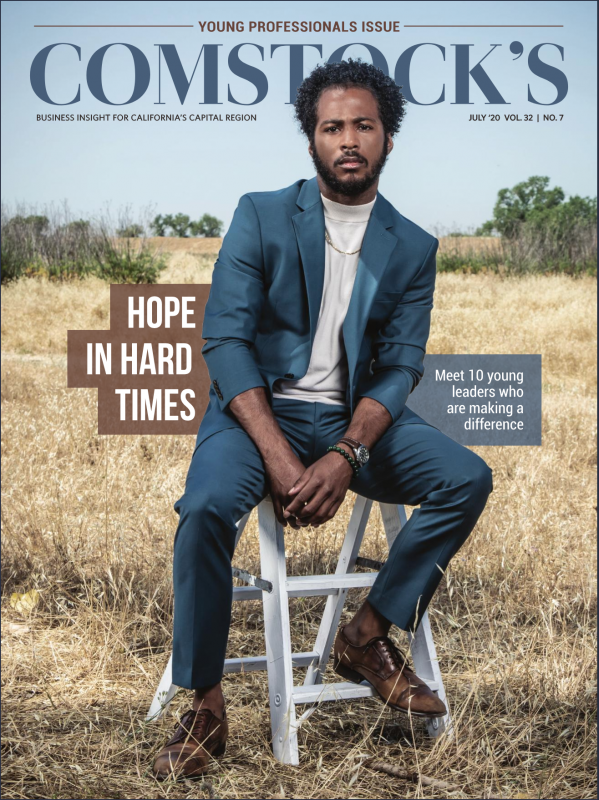Lifestyle blogger Alicia Lund of Cheetah is the New Black recalls her early days of blogging in San Francisco in 2009. She would have her roommates or sister snap photos of her, write her posts in the evenings, and post to her blog on the platform Blogger. Pre-Instagram, blogging then was just a hobby where the goal was simply to express oneself and connect with like-minded people.
“I laugh at myself now, like, why was I doing this?” Lund says. “Back in the day, it was pure passion because I was working full time at an investment firm, and then it was coming home and, like, being so excited to shoot my outfit. Just a young 23-year-old sharing iPhone photos — ‘This is what I wore today.’”
Lund’s lifestyle blog gained traction after she moved to New York in 2011. The monetization platform, RewardStyle, had just launched and asked her to be one of the first to use it to monetize affiliate sales. Around the same time, she accepted a job at Elle magazine as the fashion editor for elle.com, balancing Cheetah is the New Black in the evenings. Working with an agent helped her secure and manage partnerships, a process she took in-house after moving to Sacramento for her husband’s job transfer five years ago. Now, working from her East Sacramento home, she contracts two consultants to help her manage brand partnerships. Her Instagram feed, @aliciamlund, looks at once editorial and effortless and covers home decor, style, motherhood and travel. Lund posts to Instagram most days, sharing a mix of paid and organic (unpaid) content — she says that the majority of her content tends to be the latter. “I only work with brands that I use and am excited to share,” she says. “I know my audience will enjoy what’s authentic to me.”
Lund’s website and social media audience — more than 90,400 followers on Instagram and nearly 155,000 on Facebook — are accustomed to posts of her daily life in which she embodies her laid-back brand of casual luxury. A recent post shows Lund barefoot in her home, dressed in a sheer floral dress layered with an oversized sweater, baby on her hip. In her caption, she writes about the effect that dressing up can have on your mood (a subtle nod to COVID-19 living), and recommends layering a long sweater over a maxi dress for style and comfort. She then tags the designer of the sweater, a custom hashtag that signifies the brand partnership, and offers her followers a 20-percent off code to shop the brand. For this post, Lund gets paid by the designer; under the endorsement guidelines of the Federal Trade Commission, she must disclose this is a sponsored post.
If the business of becoming an influencer seems unclear, it might be because it takes a combination of abstract qualities: charisma, the express ability to turn one’s life into art, the confidence to commodify said art, and an innate desire to share, even if you’re really quite shy in real life. On top of these squishy, amorphous qualities comes a number of measurable, strategic ones. To succeed, an influencer needs to develop skills that will help build an audience, establish a brand and create compelling content.
Building a Following Is Key
As a longtime influencer (my perpetual side gig) and a content marketer (my day job), I feel close to the concept of influencer marketing — yet seven years after starting my blog, Babesicle, which is all about California style with a bohemian flair, I also find influencing a mysterious engine. That’s not to say its moving parts and functionality are particularly difficult to grasp, but each influencer approaches it so uniquely, and there are so many nuances to the business — which merges creativity, marketing, technology, personality and chutzpah — that it never ceases to intrigue me.
Alicia Lund, who posts to her blog and social media from her East
Sacramento home, has more than 90,400 followers on Instagram and
nearly 155,000 on Facebook.

Having the pieces to the puzzle can elevate the quality of influencers’ content, opening the door to brand partnerships. Brands, recognizing that an individual’s point of view is a compelling piece of native ad content (native ads are the sneaky advertisements that look like organic content), have wasted no time in leveraging influencers for their coveted target audiences. After all, a testimonial from someone whose life you want to emulate is exceedingly more valuable than a message that comes directly from a brand, which consumers often tune out. According to Forbes, “a brand’s owned and operated account will receive 90 (percent) less positive sentiment compared to a talent/influencer’s branded post.” In 2019, brands’ marketing budgets reflected this with the standard to dedicate up to 20 percent to influencer marketing.
Beyond native advertising content, there are two other main revenue sources for social media influencers. Kelly Burns, director of technology at creative agency and influencer platform Socialyte, breaks them down: “The first way would be advertisements that feel like organic content, called native content. The second is affiliate revenue. An influencer often will work with an affiliate platform, something like RewardStyle or ShopStyle … where if somebody clicks through from an influencer’s website to (a store), checks out and buys that product, they’ll make a percentage of the sale. The third way is banner content, which is more of a traditional website or digital ad buy. If you’re on YouTube, that could be a pre-roll, 30 seconds you have to watch about whatever brand it is.” She estimates that an influencer with 100,000 followers could make $50,000-$100,000, and one with 1 million followers can make $500,000-$1 million from their social media content alone. This is dependent on many factors, and it takes most influencers years of hard work to become as profitable.
Burns, a former Sacramentan who now lives in New York, once referred to herself as an “influencer for hire.” In the early 2010s, “I would do ghostwriting, styling assistance, negotiate brand deals for them, social media management,” she says. “It really ran the gamut.” At the time, Burns was also trying to become an influencer herself, but recognizing that it requires a certain passion to do all the work involved, not to mention that she was already doing it for seven other influencers, she resolved that her “strong suits were much more behind the scenes.”
For some, it takes just one successful project to gain traction as a profitable influencer. Mike Diamond, a Sacramento-based content creator and self-described “guy on the internet,” broke into the space in the early days of social media advertising with two consecutive 2013 campaigns — first, a Pax vaporizer campaign, followed by a $75,000 Ford contract. “Promoting the Pax product was kind of the kick-start to everything,” Diamond says. “And then, that same year, I went on a campaign for the 2014 Ford Mustang, which was the first international social media project by a huge brand that was ever done. So that was massive.”
After helping to document the release of the Mustang across the world, producing video clips that were featured in the globally aired commercial, Diamond gained experience and an impressive portfolio piece, not to mention royalties he continues to collect.
Diamond describes the current landscape as much more crowded, with an emerging attitude of entitlement. “A lot of people who are hitting up brands — these huge companies that have been around since before we were born — are acting like they have the true influence,” he says, “when it’s the other way around.” Diamond believes in confidence but also humility, and he approaches brands “as a fan” when pitching a partnership, rather than touting any sort of “influence.” In addition to creating content for brands (not necessarily for publishing on his own channels), he advises other influencers on how to interact with companies and helps facilitate their personal brand in the right direction.
Diamond’s photography-forward content, with its focus on art and California landmarks, is more about creating a vibe than letting followers into his personal thoughts and experiences. It’s decidedly on the more private side. According to Burns, Diamond’s point of view might fall in the “visually stunning” category of influencers, the space where many photographers and content creators fall. She describes a second archetype that’s more personality driven (a celebrity like Britney Spears, for example, who is heavy on the personality, light on the aesthetics) and a third type who, like Lund, “wants to communicate their lifestyle to you.” The latter is where the tastemakers fall, the category Burns describes as the most likely to be moneymakers.
“Now people want the connection with the person. The (influencers) that seem to be truly authentic are really doing the best because it shines through. I’m really trying to force myself to do that right now because I’m someone who hasn’t been so into talking to the camera and putting my face forward in that way.”
Alicia Lund LIFESTYLE BLOGGER, CHEETAH IS THE NEW BLACK
The tide seems to be turning among these tastemakers, however, with audiences no longer satisfied with an impeccably styled photo of a brunch outfit. In an April 2019 article, The Guardian reported that we’ve entered a new “era of authenticity,” where influencers “must display passion.” The sheer volume of digital content and consumer fatigue from scrolling through a sheen of perfection has people longing for more substance. The pendulum has swung toward realness and honesty. And with the 2016 introduction of Instagram Stories, the feature that expires after 24 hours and requires very little production or editing, influencers are able to show behind-the-scenes content and the less glossy snippets of daily life.
Titus attributes the cultural transformation to the audience’s appetite for authenticity. “I think entering into the fashion-blogging world when there wasn’t a lot of story, it was just kind of stunting different brands or doing things for likes or for (a consistent color palette),” she says. “After a while, I think the community really wanted to get to know people and their stories and the ‘why’ behind their creations. The audience kind of pulled it out of us, and the whole industry took a turn for authenticity.”
Lund says this shift has challenged her to show her personality more. “Now people want the connection with the person,” she says. “The (influencers) that seem to be truly authentic are really doing the best because it shines through. I’m really trying to force myself to do that right now because I’m someone who hasn’t been so into talking to the camera and putting my face forward in that way.” Ironically, sometimes authenticity requires intention, especially since being open and vulnerable is an additional layer that, in the early days when Lund started her blog, wasn’t an essential part of the fashion blogging experience.
When putting one’s life on display is the business, it requires the influencer to choose how much to share and decide what might feel exploitative. Lund shares her personality “in snippets.” Although she does share photos of her two children, she doesn’t feel she has to share anything overtly personal in order to convey her character. “I want to hold a little piece of myself and my family life and stuff,” she says.
For Titus, sharing from a personal place has shifted her blog’s tone over the last couple years. In the previous, fashion blogger iteration of her creative identity, about 30 percent of her feed was gifted or sponsored. She would feature posts like “2 ways to a tie-front cardigan” on her Instagram and blog. Now she offers a window into her journey of going freelance, various art projects, messages of encouragement and musings about conscious living. What she’s selling now is her creative ability, with her social media posts drawing in design clients and art commissions.
“It almost felt like the people who understood me were online and seemed to respond when I would put it out, so it felt safe,” Titus says. “I try to formulate what I share as life lessons and talk about the journey. Because for me, that’s really all there is — the transformation over time and the willingness to learn and grow. And I think that’s something most people relate to.”
Making Connections
There are more than 3,000 influencers in Sacramento, according to Sacramento-based influencer marketing software company Grin. The biggest is Joey Hickson, who runs a fitness and lifestyle account and has 3.2 million Instagram followers. Lund, with more than 90,400 followers, ranks among the upper echelon of local influencers in her lifestyle niche. Over the last 10 years, Sacramento’s economic expansion has extended to cultural and artistic growth, and the capital city is home to a vibrant community of photographers and bloggers with specializations, including fashion, fitness and food.
Sacramento’s confluence of affordability, leisure opportunities and communal spirit fosters the influencer culture. They mix, collaborate and exchange tips through meetups like Tuesdays Together and other organizations designed to connect creatives who are in what can be an isolating and sometimes baffling business. Topics include how to create a media kit and how to score brand collaborations.
Lund recently contributed to this spirit of community with the creation of the retreat From Scratch. “We wanted to bring like-minded entrepreneurs together,” she says. “It’s a group of women founders, super diverse of age and career type. It’s a place for all of us founders to have all these great conversations of (things such as) how do you get funding, all of the interesting, businessy kinds of questions.”
This summer’s From Scratch event has been postponed due to COVID-19, but Lund, along with many influencers across our region (and across the globe), continue to share their daily lives through travel throwbacks, at-home OOTDs (outfits of the day) and styled picnics. You might think — with influencer platforms like Fohr advising influencers to prepare for a 30 percent decrease in income — that they might be grasping for content. But before there were brand partnerships or #ads or “visit link in bio to shop,” there were creative people with smartphones and the audacity to share, looking for a way to express themselves.
–
Get feature stories like this delivered directly to your inbox: Subscribe to the Comstock’s newsletter today.
Recommended For You

Behind the Screens
The increase in technology use is changing our lives, and not everyone thinks that’s a bad thing
With teleconferencing, email, e-commerce and social media, the internet makes it possible for many people to work virtually. However, being “always online” comes at a cost.

Buzzwords: Influencer
In recent years, with the rise of social networking, the business world has embraced a modern form of evangelism, making the word synonymous with an entirely new brand of evangelist: the influencer.

Getting to Know: Gabriel Diaz
How this Sacramento-based ‘creative stylist’ helps others elevate their lifestyles
Gabriel Diaz expects the quizzical expression that sometimes washes over people’s faces once he tells them what he does for a living. He’s a style and wellness influencer, or “creative stylist,” as he prefers to be called.




